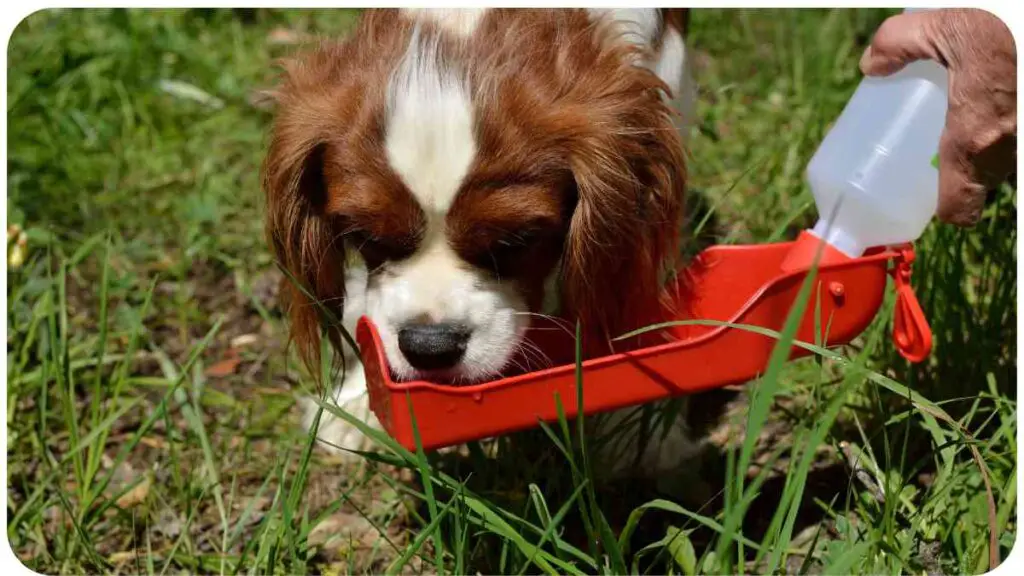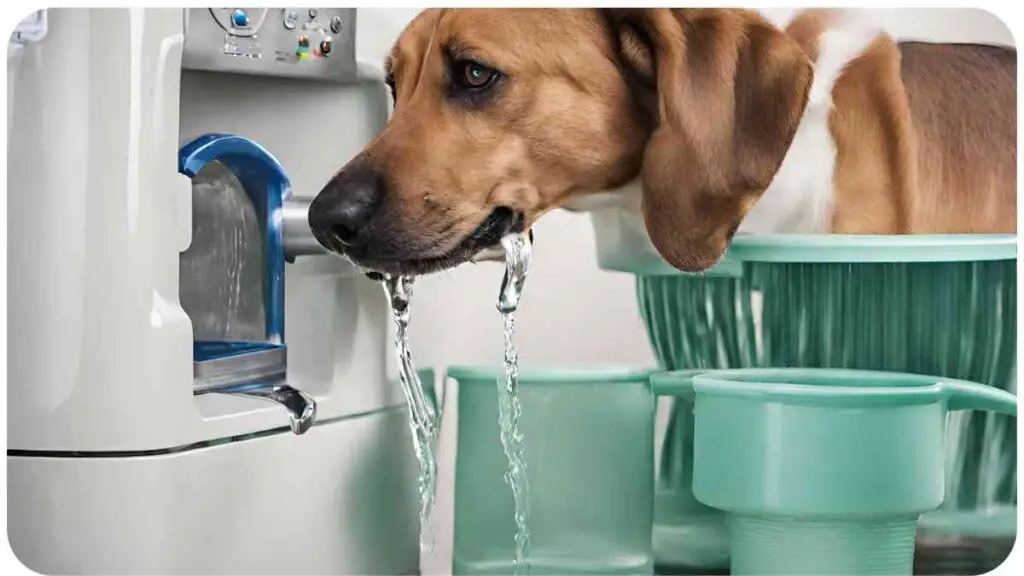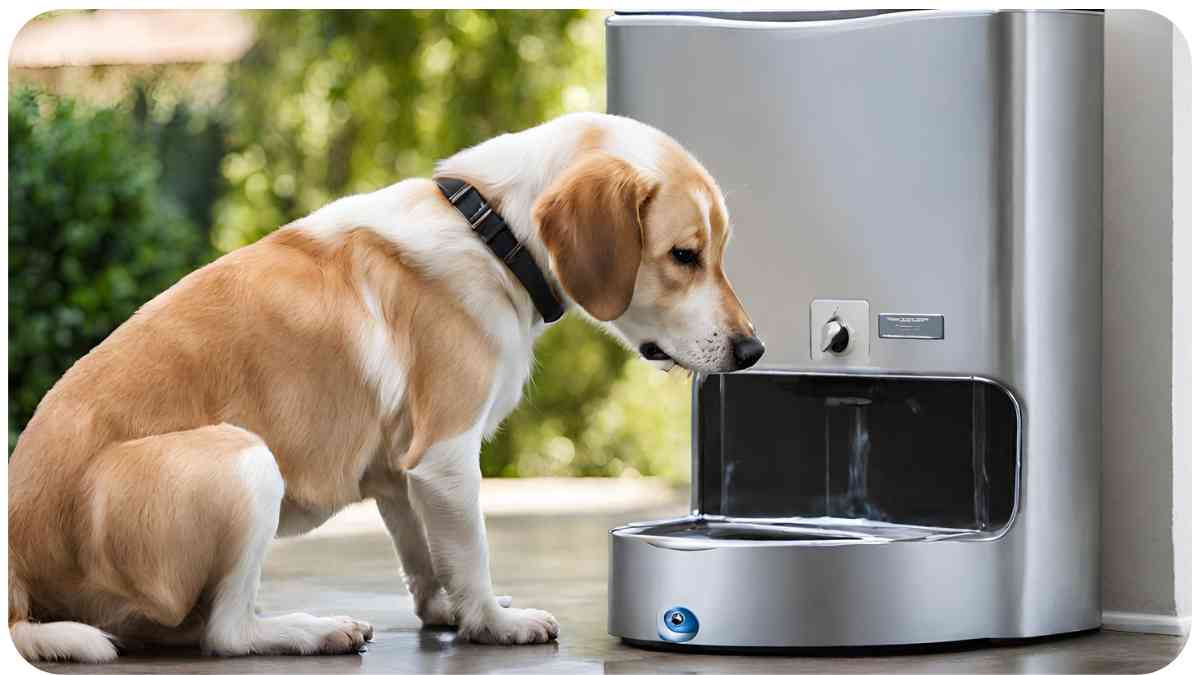If you’re a pet owner who relies on an automatic dog water dispenser to keep your furry friend hydrated, encountering leaks can be frustrating. Not only does it create a mess, but it also raises concerns about water wastage and potential damage to your floors.
Before feeding your dog ham, consider the potential risks associated with this popular human food. Educating yourself about safe dietary choices for your pet helps prevent health issues and ensures they receive appropriate nutrition for their optimal health.
In this guide, we’ll delve into the reasons why your automatic dog water dispenser might be leaking and provide practical solutions to address this issue effectively.
| Key Takeaways |
|---|
| 1. Regular maintenance is essential for preventing leaks. |
| 2. Inspect seals, connections, and valves regularly. |
| 3. Troubleshoot leaks promptly to prevent further damage. |
| 4. Seek professional help if unable to resolve the issue. |
| 5. Ensure your pet always has access to clean, fresh water. |
2. Understanding Automatic Dog Water Dispensers

Automatic dog water dispensers are convenient gadgets designed to provide a continuous supply of fresh water to your canine companion. These devices come in various shapes and sizes, ranging from gravity-fed models to electronic systems with sensors. While they offer convenience and ensure your dog always has access to water, they can sometimes develop leaks, compromising their functionality.
When troubleshooting your Furbo Dog Camera, it’s essential to follow these connectivity solutions for seamless operation. Addressing common setup issues ensures you stay connected with your furry friend, enhancing your overall pet monitoring experience.
3. Common Causes of Leaks in Automatic Dog Water Dispensers
Leakage in automatic dog water dispensers can stem from several factors. Let’s take a closer look at some of the most common reasons behind this issue:
| Cause of Leak | Description |
|---|---|
| Damaged Seal | The seal, which prevents water from escaping, may degrade over time due to wear and tear. |
| Loose Connections | Loose fittings or connections between the dispenser components can lead to water seepage. |
| Cracks or Damage | Cracks or damage to the dispenser’s body or reservoir can result in water leakage. |
| Clogged or Faulty Valve | A clogged or malfunctioning valve can disrupt the flow of water, causing leaks or drips. |
4. Importance of Regular Maintenance
Regular maintenance is crucial for ensuring the optimal performance of your automatic dog water dispenser and preventing leaks. By incorporating a few simple tasks into your routine, you can extend the lifespan of your dispenser and minimize the risk of water-related issues.
5. Tips for Preventing Leaks in Automatic Dog Water Dispensers

Maintaining your automatic dog water dispenser doesn’t have to be a daunting task. With these practical tips, you can keep leaks at bay and ensure your furry friend always has access to clean, fresh water:
Wondering about the waterproof capabilities of Petsafe collars? Explore this guide to understand how they withstand water exposure. Ensuring your pet’s safety and comfort in various conditions is crucial, and knowing about waterproof features can provide peace of mind.
Maintenance Checklist
| Maintenance Task | Frequency |
|---|---|
| Check Seals and Gaskets | Monthly |
| Tighten Loose Connections | Bi-monthly |
| Inspect for Cracks or Damage | Quarterly |
| Clean and Lubricate Valves | Every 6 months |
| Replace Filters (if applicable) | As needed |
Regularly inspecting and maintaining your automatic dog water dispenser can help you identify potential issues early on and address them before they escalate into more significant problems.
6. Troubleshooting Leaks
If you’re dealing with a leaky automatic dog water dispenser, don’t panic. Here are some troubleshooting steps you can take to pinpoint the cause of the leak and resolve it effectively:
- Inspect the Seal: Check the seal around the dispenser’s lid or spout for any signs of damage or wear. If necessary, replace the seal to create a tight, secure fit.
- Tighten Connections: Ensure all fittings and connections are securely tightened to prevent water from escaping. Use a wrench or pliers to tighten any loose components gently.
- Examine the Reservoir: Inspect the reservoir for cracks or damage that may be causing the leak. If you find any issues, consider replacing the reservoir to prevent further leakage.
- Clean the Valve: If the dispenser has a valve, remove it and clean it thoroughly to remove any debris or buildup that may be causing it to malfunction.
- Check for Clogs: Verify that there are no obstructions or clogs obstructing the flow of water within the dispenser. Use a cleaning brush or pipe cleaner to clear any debris from the dispenser’s internal components.
- Inspect the Pump (if applicable): If your automatic dog water dispenser includes a pump mechanism, inspect it for any signs of damage or malfunction. Replace or repair the pump as needed to restore proper functionality.
- Test for Leaks: Once you’ve addressed potential issues, refill the dispenser and monitor it closely for any signs of leakage. If the problem persists, revisit the troubleshooting steps to identify any overlooked issues.
Maintaining your cat water fountain involves regular filter changes to ensure clean and fresh water for your feline companion. Learn the recommended frequency for filter replacements to optimize the functionality and health benefits of your pet’s drinking water.
7. Seeking Professional Help
If you’ve exhausted all troubleshooting steps and are still unable to resolve the leak issue, it may be time to seek professional assistance. Contact the manufacturer or a qualified technician who specializes in pet water dispensers to diagnose and repair the problem effectively.
Adjusting portion sizes with a Neater Feeder is vital for your dog’s diet and overall well-being. Understanding how to tailor feeding amounts to your pet’s needs promotes healthy eating habits and contributes to their long-term health and happiness.
8. Conclusion
Dealing with a leaking automatic dog water dispenser can be a hassle, but with the right approach, you can address the issue and ensure your pet stays hydrated without any mess or inconvenience.
By understanding the common causes of leaks, implementing regular maintenance practices, and troubleshooting effectively, you can keep your dispenser in top condition and provide your furry friend with a continuous supply of clean, fresh water.
Remember, a well-maintained dispenser not only benefits your pet but also gives you peace of mind knowing that leaks are a thing of the past. So, roll up your sleeves, tackle those leaks head-on, and enjoy hassle-free hydration for your beloved canine companion.
Further Reading
- PetSafe Support: My pet fountain is leaking
- This article from PetSafe offers troubleshooting tips and solutions for addressing leaks in pet fountains, including automatic dog water dispensers.
- Avidity Science: Dog Watering Valves
- Avidity Science provides insights into dog watering valves, their functionality, and maintenance tips to prevent leaks and ensure optimal performance.
- Samsung Support: What should I do if water drips from the dispenser?
- Samsung’s support page offers guidance on troubleshooting water dripping issues from dispensers, which can be applicable to automatic dog water dispensers as well.
FAQs
How can I tell if my automatic dog water dispenser is leaking?
If you notice puddles of water around the dispenser or observe a continuous drip from the dispenser’s spout, it’s likely that your automatic dog water dispenser is leaking.
What are some common causes of leaks in automatic dog water dispensers?
Common causes of leaks include damaged seals, loose connections, cracks or damage to the dispenser’s body, and clogged or faulty valves.
Can regular maintenance prevent leaks in automatic dog water dispensers?
Yes, regular maintenance such as checking seals, tightening connections, and cleaning valves can help prevent leaks and ensure the dispenser’s optimal performance.
How often should I inspect my automatic dog water dispenser for leaks?
It’s recommended to inspect your automatic dog water dispenser for leaks at least once a month as part of your routine maintenance. Additionally, monitor it closely for any signs of leakage between inspections.
What should I do if I can’t resolve the leak issue on my own?
If you’ve tried troubleshooting steps and are still experiencing leaks, consider seeking professional assistance from the manufacturer or a qualified technician specializing in pet water dispensers. They can diagnose and repair the problem effectively.

I’m Dr. Hellen James, a professional veterinarian with a deep interest in the ways that litter size affects the health of animals. I’ve spent years studying this subject and performing research on reproduction in many different kinds of creatures.


